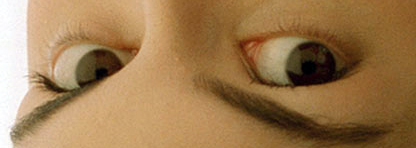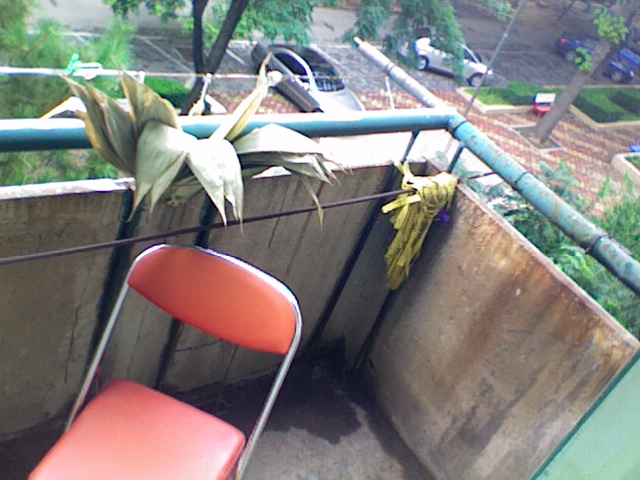Undertaking such activities as sewing together a bunch of banana leaves discovered in plastic under my bed in my new apartment and installing the assemblage on my balcony to give something for the neighbors to look at; I suddenly find a pair of eyes staring at me from within my conscience: those eyes belong to Amélie.
She performs only for herself – she makes art projects that are private and not art,(1) though her projects have almost homeopathic effects. There is a discipline to her distractions, a retaining of commitment to childish games; because of this and her big eyes, she looks like a little girl. Her mischief to help others by some twist is also a commitment to her body and health, there is nothing desperate about her. That is why we hate her.
We also make art at home. We sometimes wonder why our lives don’t have theme music and magic, and we wonder and wonder and think and think, while Amélie acts decisively on numerous self-improvements, like some innocent conceptual artist.
We also make artwork in our daily lives, small changes to our environments, modifications to our ‘communities’ – but then we document it, distancing ourselves from the effects. Not Amélie. Her clandestine aesthetics circulate in the realm of concrete but tacit results. Everyday life is the medium, but the message remains embedded in a life, in a lifestyle, in a narrative.
Somehow, as if cursed with the gift of clairvoyance, we have access to this narrative – we witness this private world as if we are right there, jaundicedly scrutinizing her happy-go-lucky attitude, her silent deeds, her flirtations with oblivion; we forget about the distance entailed as the necessity of its being made visible. It’s a film, after all. We are caught wanting Amélie as a role model while knowing she isn’t pure (this consideration takes place slightly prior to the consideration that she isn’t real).
My banana leaf fan curls anemically and looks atrocious; I have no desire to see that movie again.
1) I remember a young performance artist telling the audience at a presentation in Kassel, Germany about a performance in which she would hold onto the sleeve of an unwitting person in a parking lot, letting go only after an unpredictable but supposedly non-arbitrary length of time. She explained nothing to her temporary host. Surely this was art – but at what point did this gesture become art? Only when she told the audience about it. But nobody in the audience remarked on that. Marina Abramovic, on the panel, said “It sounds like a very intense piece.”
(originally posted on the Vitamin Creative Space blog, 23/07/2009)

